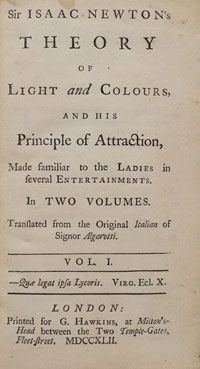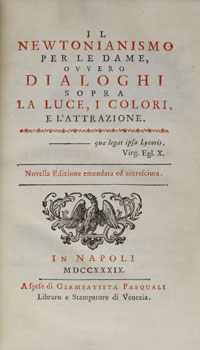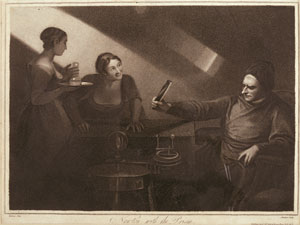Newton for ladies
Francesco Algarotti's Il Newtonianismo per le dame is written as a conversation between the narrator and an anonymous Marchioness. During this conversation the Marchioness is 'converted' from Cartesianism to Newtonianism: at the end, the narrator triumphantly says, 'The Light of Newtonianism has dissipated the Cartesian Phantoms which deluded your Sight. You are really now a Newtonian'. The text was written in response to Fontenelle's Entretiens sur la pluralitè des mondes (1686), which promoted Cartesian ideas using the same format of a dialogue. It therefore shows how Newtonian theories were taking over from the old Cartesian views. Sir Isaac Newton's theory of light is a translation of Algarotti's work into English by Elizabeth Carter.
The aim of Algarotti's work was not to teach women about Newtonianism, but rather to entertain and popularise Newton's theories. This is shown by the verses in the text. In the original Italian, there are poems dedicated to Lady Mary Wortley Montagu and Lord Hervey, both of whom were supposedly in love with Algarotti. Shorter poems throughout the text present Newtonian theories in a way meant to amuse rather than instruct the reader.
The texts also show how Newtonianism was gendered, as it focuses on theories of light and colour but does not mention the more mechanical aspects. Although it may seem that the book was promoting a view of women as educated and interested in the latest scientific theories, some say it presents the Marchioness as a passive recipient of the narrator's knowledge, and unable to understand the more complex theories. Others think that the book shows that it was possible to be both curious about the world and fashionable.


